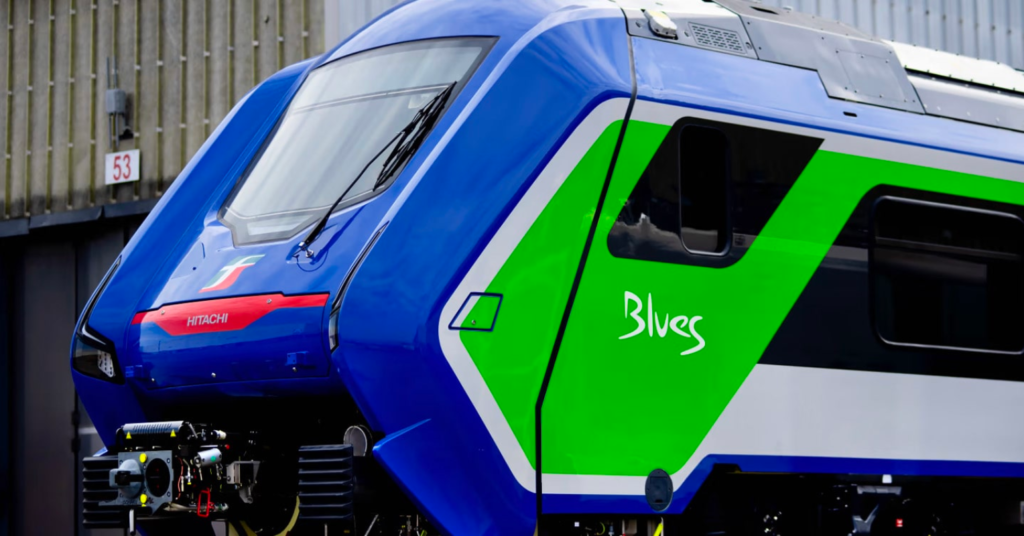Hitachi reports a 50% reduction in emissions since the introduction of the Masaccio train in Italy.

While railways in Europe are gradually being electrified, only about 60% of lines have been updated thus far. In Italy, for instance, electrification covers approximately 70% of the network, whereas Germany and France lag at around 50%. The United Kingdom faces an even greater challenge, with only 38% of railways electrified. These figures highlight the pressing need for sustainable alternatives to diesel trains, especially on unelectrified tracks that may not see significant investment.
Introducing the Masaccio Tri-Brid Train:
Hitachi Rail has developed the Masaccio tri-brid train, named after the renowned Italian painter. This passenger train, recently launched in Italy, operates on three power sources: overhead electric lines, a diesel hybrid engine, and a battery. The revolutionary battery system can be charged while the train runs on electricity from overhead lines, as well as through regenerative braking. This process harnesses the energy generated when the train brakes, transferring it to the battery for later use in accelerating the train.

Efficiency and Environmental Benefits:
The Masaccio train’s onboard battery serves two crucial purposes.
Firstly, it allows the train to operate entirely without diesel power on short sections of unelectrified track, reducing emissions and noise pollution.
Secondly, the battery enables the train to accelerate faster than previous models, resulting in reduced journey times.
Hitachi reports a 50% reduction in emissions since the introduction of the Masaccio train in Italy.
Sustainable Design and Materials:
Hitachi’s commitment to sustainability extends beyond power sources. The Masaccio train is constructed using ultra-lightweight metals, maintaining strength and safety while minimizing weight. This design choice mitigates the strain on road infrastructure and reduces tire wear, common issues faced by heavier electric vehicles. Hitachi also focuses on reusing and redistributing materials across its products, particularly critical minerals like lithium. This approach helps reduce waste and promote circularity within the company’s operations.
Future Goals and Climate Neutrality:
Hitachi aims to achieve full climate neutrality in its train operations. To reach this goal, the company is working on an entirely battery-powered train that is projected to be in service by 2030. Hitachi also plans to retrofit older train models, reducing material consumption and promoting sustainability. Additionally, the company plans to integrate solar panels into its trains, aiming to fulfill approximately 70% of its energy needs through renewable sources. This transition could lead to a reduction of around 7,000 tonnes of CO2 emissions annually.